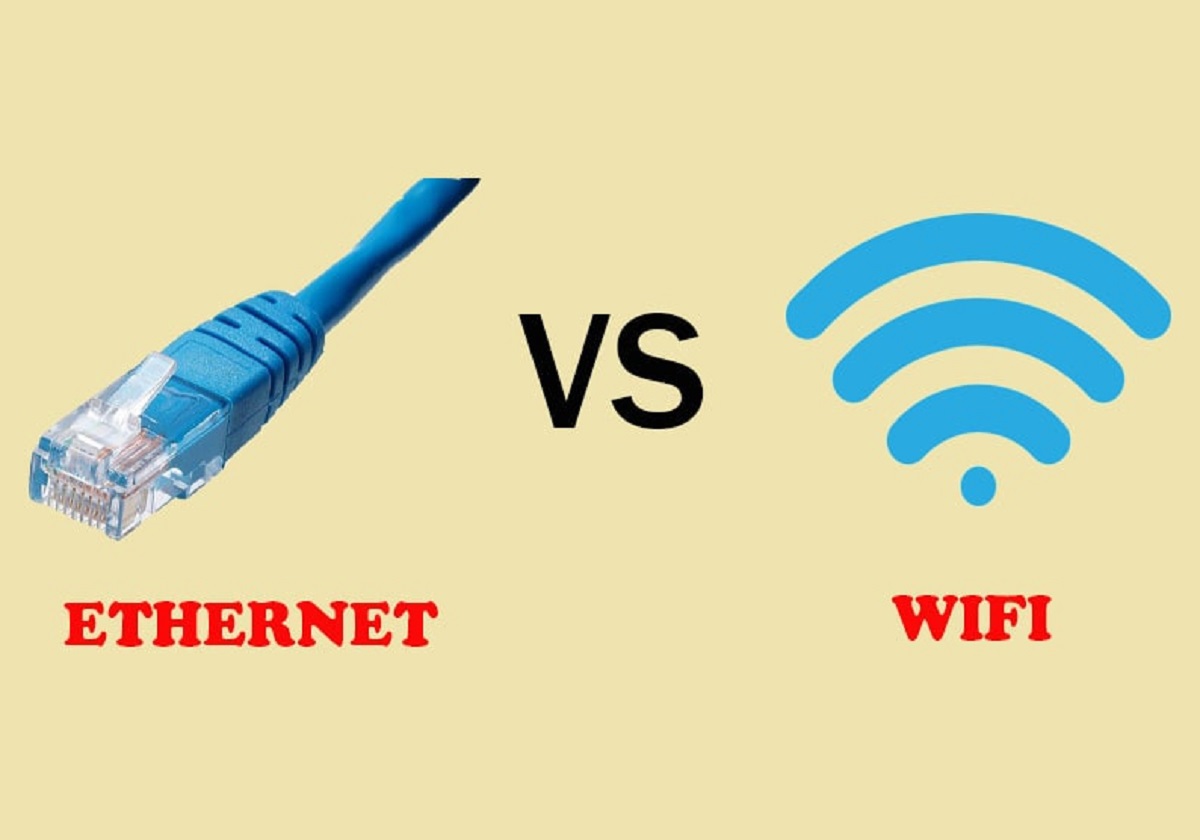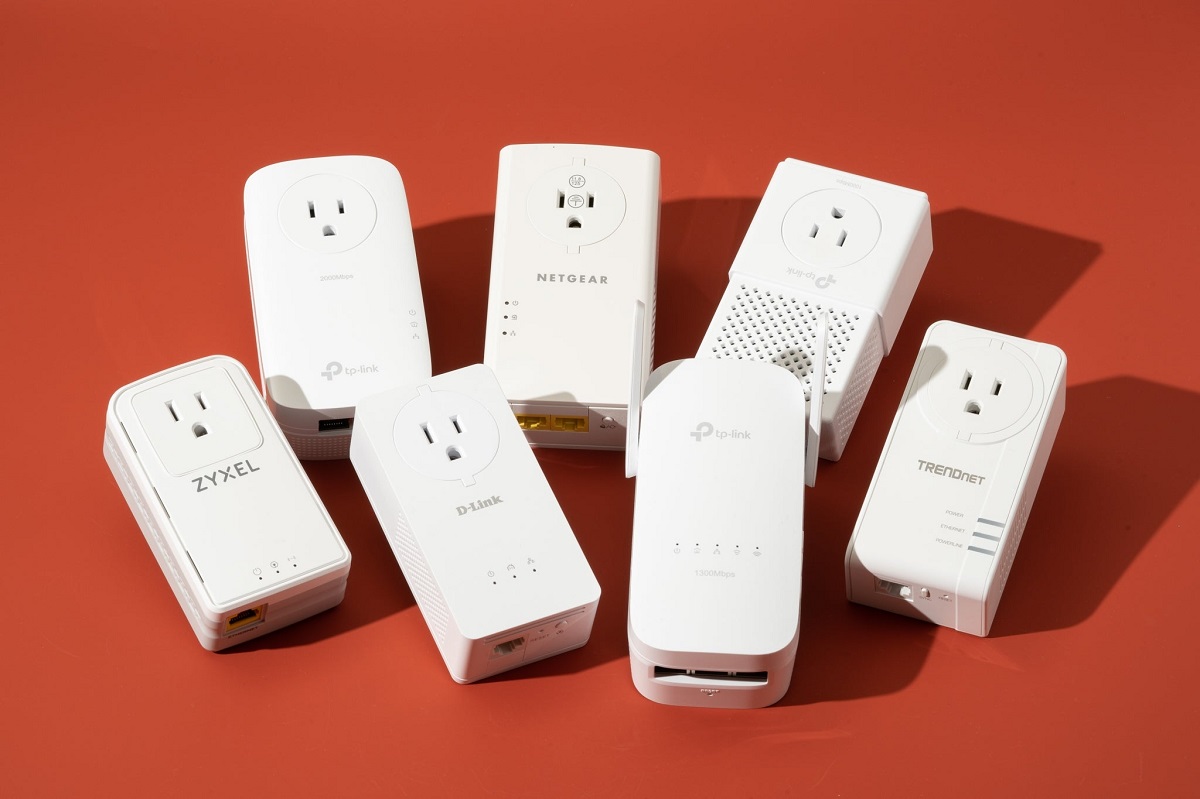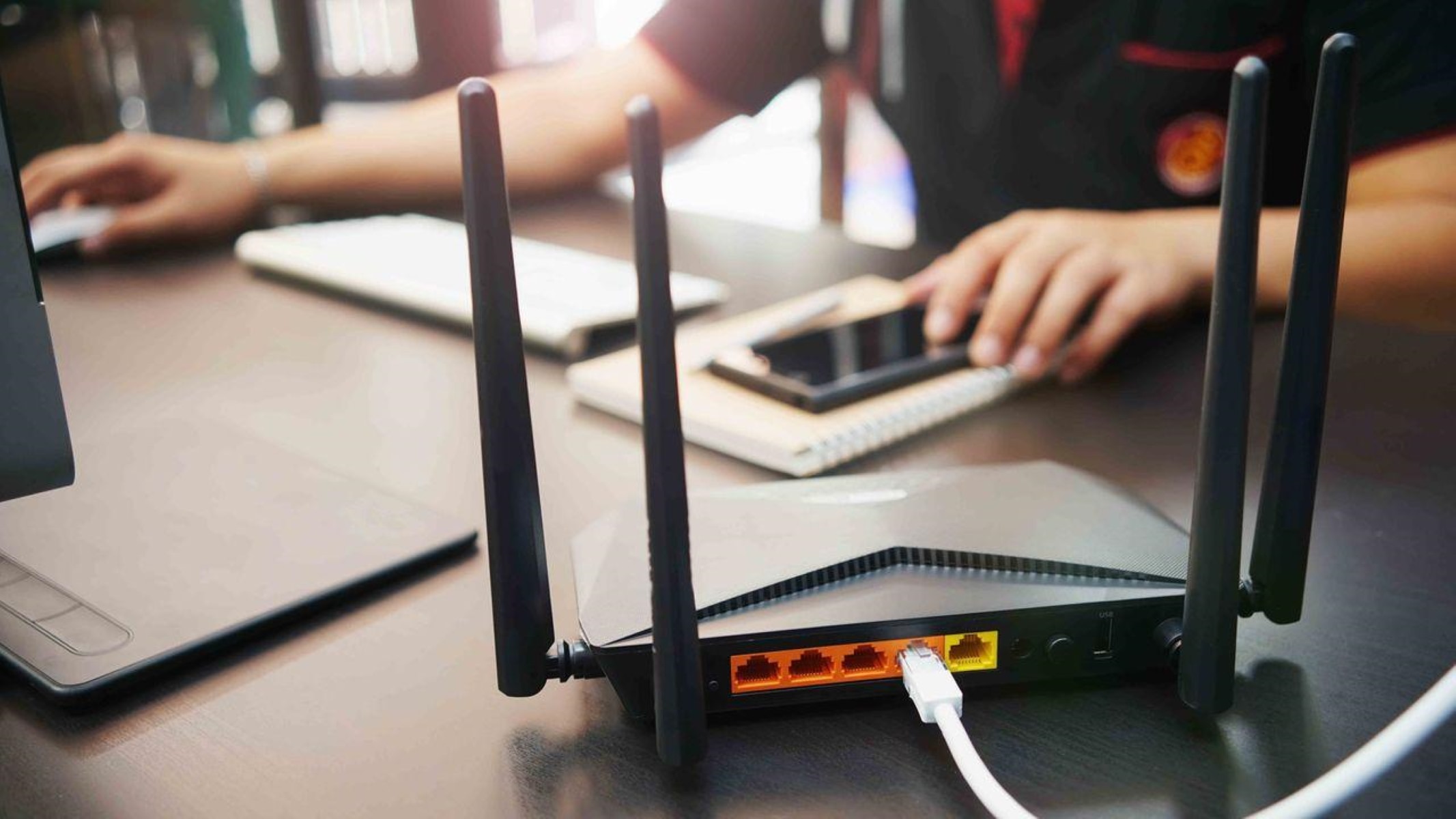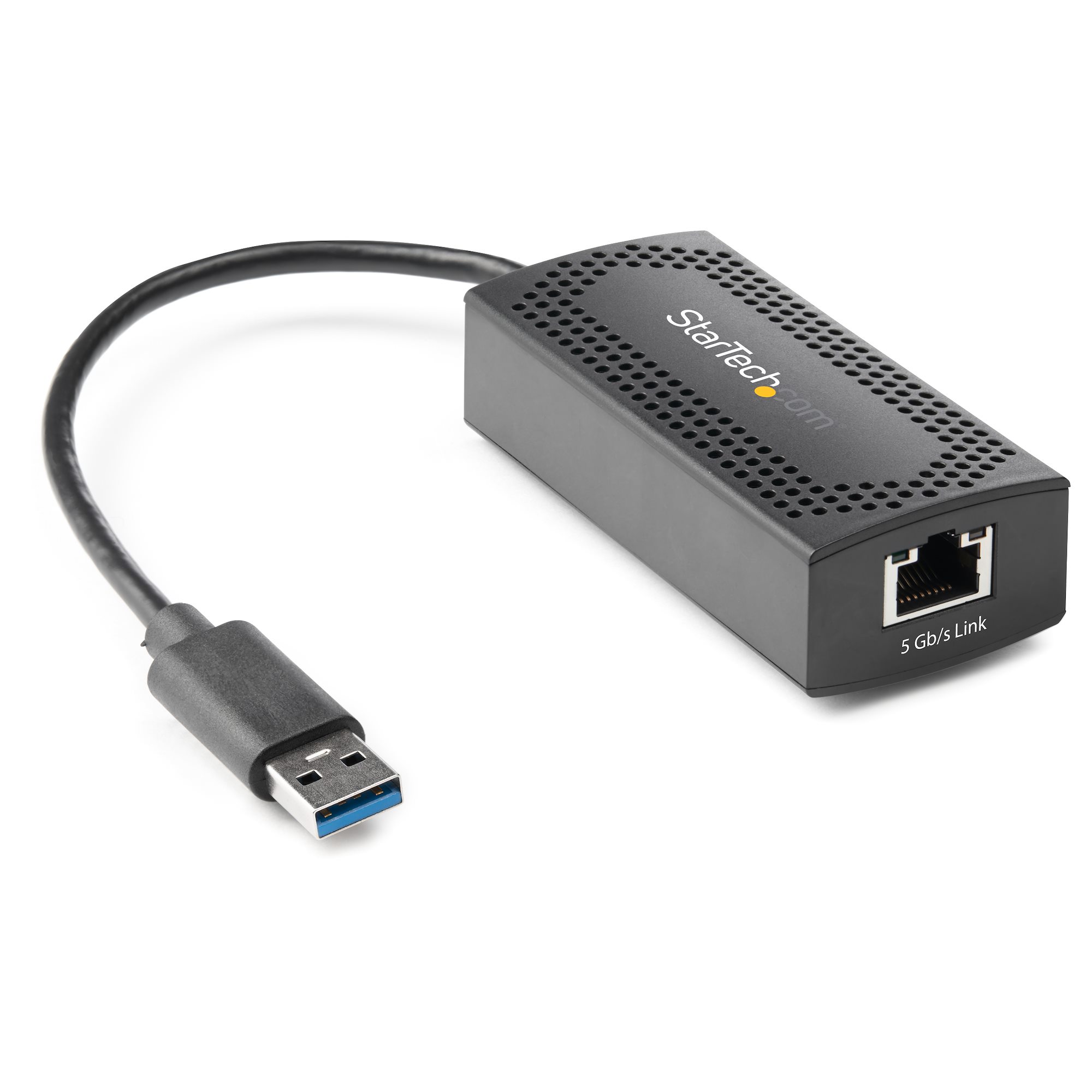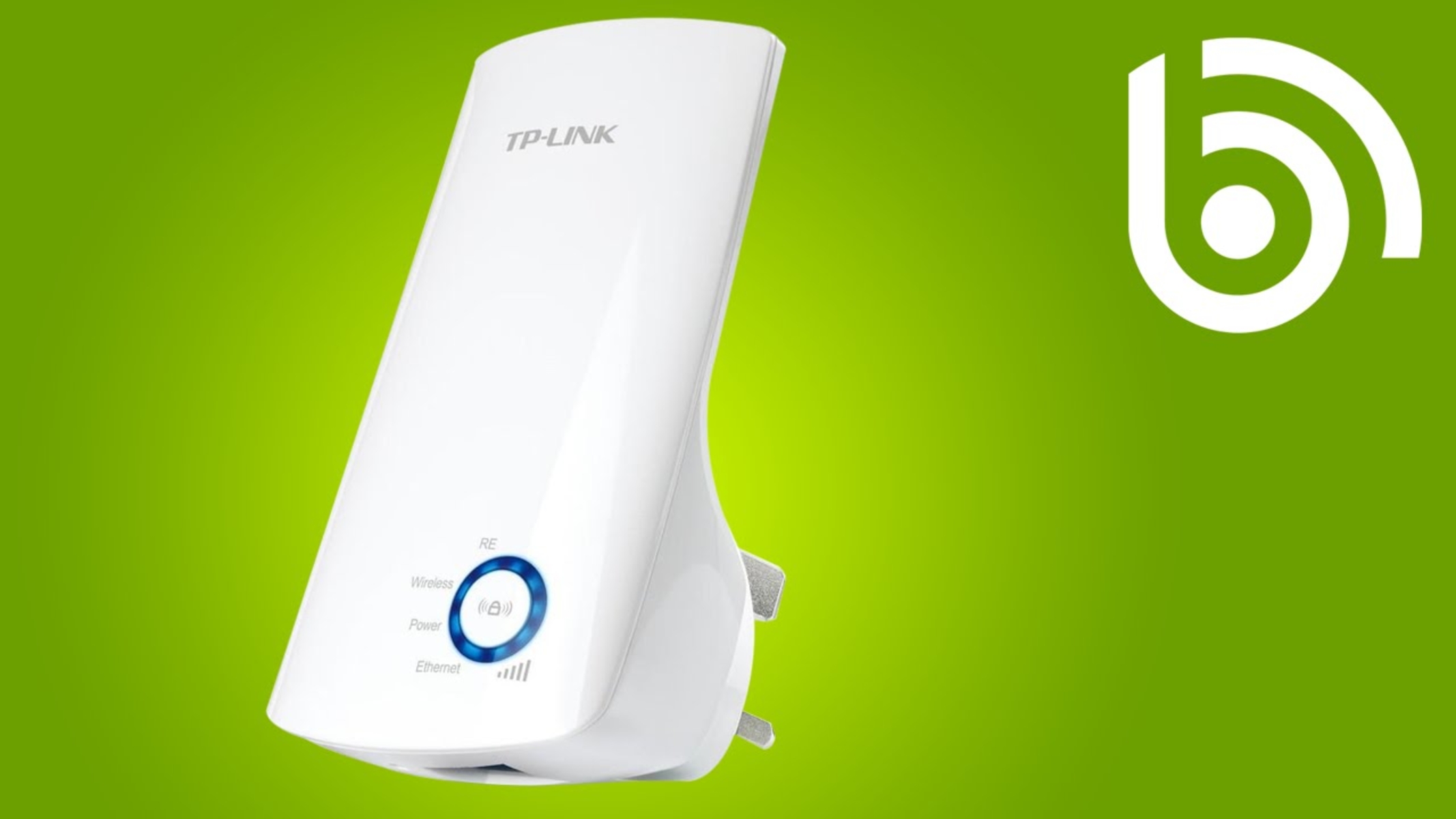Introduction
When it comes to connecting to the internet or local networks, there are two popular options: Ethernet and Wi-Fi. These two technologies have revolutionized communication and made it easier for people to stay connected. As an SEO writer, it is essential to understand the differences between Ethernet and Wi-Fi, as well as their respective benefits and drawbacks.
Ethernet is a wired networking technology that uses cables to connect devices, such as computers, servers, and routers. On the other hand, Wi-Fi, also known as wireless fidelity, is a wireless networking technology that allows devices to connect to a network without the need for physical cables. Both Ethernet and Wi-Fi have their advantages and disadvantages, and which one is faster depends on a variety of factors.
In this article, we will delve into the world of Ethernet and Wi-Fi, exploring their speed capabilities, advantages, and use cases. While speed is an important factor when considering which technology is faster, it is crucial to note that other factors, such as distance, interference, and device capabilities, also play a significant role.
Before we compare the speed of Ethernet and Wi-Fi, let’s dive into what each technology entails and how they work.
What is Ethernet?
Ethernet is a popular wired networking technology that allows devices to connect to each other and the internet through physical cables. It was first developed in the 1970s by Xerox Corporation’s Palo Alto Research Center (PARC) and has since become a standard for local area networks (LANs).
Ethernet operates on the basis of a set of protocols known as the Ethernet standard, which defines how data is transmitted and received over the network. These protocols determine the physical characteristics of the cables, connectors, and devices involved.
The most common type of Ethernet network uses twisted-pair copper cables, known as Ethernet cables, to transmit data. These cables have four pairs of wires that are tightly twisted together, which helps to reduce interference and maintain signal integrity.
Ethernet networks typically use the Ethernet switch as a central hub, allowing multiple devices to connect to the network. The switch manages the flow of data between devices and ensures that each device receives the appropriate information.
One of the key advantages of Ethernet is its speed. It is capable of transferring data at a much higher rate compared to Wi-Fi. Ethernet connections can support speeds ranging from 10 Mbps (megabits per second) to 100 Gbps (gigabits per second), depending on the type of Ethernet and the quality of the cables used.
In addition to speed, Ethernet offers a more reliable and stable connection compared to Wi-Fi. Since Ethernet uses physical cables, the risk of interference and signal loss is minimal, resulting in consistent network performance. This makes Ethernet an ideal choice for bandwidth-intensive applications such as gaming, video streaming, and large file transfers.
Furthermore, Ethernet networks can provide better security since they are not as susceptible to hacking or unauthorized access as Wi-Fi networks. With Ethernet, you have more control over who can connect to the network and can implement additional security measures such as network segmentation and firewall rules.
Overall, Ethernet offers a fast, reliable, and secure networking solution, making it suitable for businesses, offices, and any environment where a stable and high-speed connection is essential.
What is Wi-Fi?
Wi-Fi, short for wireless fidelity, is a popular wireless networking technology that allows devices to connect to a network without the need for physical cables. It enables users to access the internet and share data wirelessly within a specific range. Wi-Fi has become ubiquitous in homes, businesses, and public spaces, providing convenient and flexible connectivity options.
Wi-Fi works by utilizing radio waves to transmit and receive data between devices and a central router or access point. The router acts as a bridge that connects the devices to the internet and allows them to communicate with each other. To establish a Wi-Fi connection, devices such as smartphones, laptops, and tablets require a wireless network adapter.
One of the key advantages of Wi-Fi is its convenience and flexibility. With Wi-Fi, users can connect to the internet from anywhere within the range of the wireless network, eliminating the need for physical wired connections. This freedom of movement allows users to work, browse, and stream content from various locations within their home or office.
Wi-Fi networks operate on various frequency bands, including 2.4 GHz and 5 GHz. The 2.4 GHz band has a wider range and is more suitable for longer distances, while the 5 GHz band offers faster speeds but has a shorter range. Wi-Fi routers often support both frequency bands to provide a balance between coverage and performance.
When it comes to speed, Wi-Fi has significantly evolved over the years. The latest Wi-Fi standards, such as Wi-Fi 6 (802.11ax), can provide speeds of up to 10 Gbps, although actual speeds can vary depending on factors such as signal strength and network congestion.
However, it is important to note that Wi-Fi speeds are typically slower than Ethernet speeds. The wireless nature of Wi-Fi introduces potential interference and signal degradation, which can impact the overall data transfer rate. In addition, distance from the router and obstacles such as walls or other electronic devices can affect the Wi-Fi signal strength and, consequently, the speed.
Despite the potential limitations, Wi-Fi offers great convenience, especially for mobile devices and situations where running Ethernet cables may not be practical. It enables users to connect multiple devices simultaneously and provides sufficient speed for most everyday internet activities such as web browsing, email, and video streaming.
Overall, Wi-Fi has revolutionized wireless connectivity, allowing users to stay connected and access the internet without the constraints of physical cables. Its versatility and widespread availability make it an integral part of our increasingly connected world.
Speed Comparison
When comparing the speed of Ethernet and Wi-Fi, it is important to consider multiple factors that can influence the actual data transfer rate. While Ethernet is generally faster than Wi-Fi, the speed can vary based on several variables.
Ethernet connections can achieve speeds ranging from 10 Mbps to 100 Gbps, depending on the type of Ethernet technology and the quality of the cables used. This makes Ethernet faster and more reliable for high-bandwidth applications such as large file transfers, online gaming, and media streaming. The wired nature of Ethernet allows for a direct and dedicated connection between devices, resulting in minimal interference and consistent speed.
On the other hand, Wi-Fi speeds depend on several factors, including the Wi-Fi standard supported by the devices and the router, the distance between the device and the router, and environmental factors like interference from other electronic devices or physical obstacles. Wi-Fi networks can generally achieve speeds ranging from 11 Mbps to 10 Gbps, depending on the Wi-Fi standard in use.
The latest Wi-Fi 6 (802.11ax) standard offers faster speeds and improved performance compared to previous standards. It can deliver theoretical speeds of up to 10 Gbps, significantly narrowing the gap between Ethernet and Wi-Fi speeds. However, achieving these speeds in real-world situations may be challenging due to the aforementioned factors that can impact Wi-Fi performance.
While Wi-Fi speeds may not match those of Ethernet, they are more than adequate for most everyday internet activities such as web browsing, email, and video streaming. Wi-Fi’s convenience and flexibility make it a popular choice for homes, offices, and public spaces, allowing users to connect multiple devices wirelessly within a specific range.
To optimize Wi-Fi speeds, users can take several steps, including placing the router in a central location, avoiding physical barriers between the router and devices, and selecting a less congested Wi-Fi channel. Additionally, upgrading to the latest Wi-Fi standard and using devices with higher wireless capabilities can enhance the overall speed and performance of the Wi-Fi network.
In summary, while Ethernet generally offers faster and more reliable speeds compared to Wi-Fi, the actual speed experienced can vary based on multiple factors. Ethernet is ideal for bandwidth-intensive applications that require consistent and high-speed connections, while Wi-Fi provides convenient and flexible connectivity for everyday internet use.
Factors Affecting Speed
Several factors can influence the speed of both Ethernet and Wi-Fi connections. It is essential to understand these factors to optimize the performance of your network and ensure a smooth and fast data transfer experience.
For Ethernet connections, the quality of the cables used is a crucial factor. High-quality Ethernet cables with proper shielding and twisted pairs can minimize interference and signal degradation, leading to faster and more reliable speeds. Older or damaged cables may not be capable of supporting higher speeds and can result in slower data transfer rates.
In the case of Wi-Fi connections, signal strength plays a vital role. The distance between the device and the router can impact the signal strength and, consequently, the speed. Generally, the closer the device is to the router, the stronger the Wi-Fi signal and the faster the connection speed. Thick walls, physical obstacles, and other electronic devices can also interfere with the Wi-Fi signal, leading to decreased speeds. Positioning the router in a central location and minimizing obstacles can help optimize signal strength and improve Wi-Fi speeds.
The Wi-Fi standard supported by the devices and the router also affects the speed. Older Wi-Fi standards, such as 802.11b or 802.11g, have slower maximum speeds compared to newer standards like Wi-Fi 5 (802.11ac) or Wi-Fi 6 (802.11ax). Upgrading to a router and devices that support the latest Wi-Fi standards can significantly enhance the speed and performance of your Wi-Fi network.
In addition, network congestion can impact both Ethernet and Wi-Fi speeds. If multiple devices are connected to the network and actively using the internet or transferring data simultaneously, it can affect the overall speed. Network congestion can be mitigated by implementing Quality of Service (QoS) settings on the router or prioritizing certain devices or applications for faster speeds.
It is important to note that devices themselves can also affect the speed. Older or less powerful devices may not have the capability to handle higher network speeds, resulting in slower data transfer rates. Updating devices or using devices with higher wireless capabilities can optimize the speed and performance of your network.
Lastly, internet service providers (ISPs) play a role in determining the speed of your internet connection. The bandwidth provided by your ISP affects the maximum speed you can achieve. It is important to regularly check your internet plan and contact your ISP if you consistently experience slow internet speeds.
Considering these factors and taking appropriate steps, such as using high-quality cables, optimizing signal strength, upgrading devices and routers, managing network congestion, and ensuring a reliable internet connection, can help maximize the speed and performance of both Ethernet and Wi-Fi connections.
Advantages of Ethernet
Ethernet offers several advantages that make it a preferred choice for many applications and environments. Understanding these advantages can help you determine whether Ethernet is the right networking solution for your needs.
1. Speed and Reliability: Ethernet provides faster and more reliable speeds compared to Wi-Fi. With Ethernet, you can achieve speeds ranging from 10 Mbps to 100 Gbps, depending on the type of Ethernet technology used and the quality of the cables. The wired nature of Ethernet ensures a direct and dedicated connection, minimizing interference and maintaining consistent network performance.
2. Security: Ethernet connections are generally considered more secure than Wi-Fi connections. Since Ethernet uses physical cables, the risk of unauthorized access or hacking is significantly reduced. Additionally, Ethernet networks allow for more control over access and can implement additional security measures such as network segmentation and firewall rules.
3. Bandwidth-Intensive Applications: Ethernet is ideal for applications that require high bandwidth, such as gaming, video streaming, and large file transfers. It provides a stable and fast connection, ensuring smooth and uninterrupted data transfer even for bandwidth-intensive activities.
4. Low Latency: Ethernet networks often have lower latency compared to Wi-Fi networks. This low latency is crucial for real-time applications like online gaming, video conferencing, and VoIP calls, where delays in data transmission can significantly impact user experience.
5. Scalability: Ethernet networks are highly scalable, making them suitable for both small and large-scale deployments. Additional devices can be easily added to the network, and the network can be expanded to accommodate growing business needs without significant disruptions.
6. Network Management: Ethernet networks offer robust management capabilities. Network administrators can easily monitor and control network traffic, diagnose and troubleshoot connectivity issues, and implement quality of service (QoS) settings to prioritize certain types of traffic over others.
7. Lower Interference: Ethernet connections are less prone to interference compared to Wi-Fi. Physical cables used in Ethernet networks are not subject to signal degradation from obstacles or other electronic devices, resulting in a more stable and consistent connection.
8. Durability: Ethernet cables are known for their durability and longevity. They are designed to withstand physical stress and can last for a long time without degradation in performance, making Ethernet a reliable networking solution.
Overall, Ethernet provides advantages in terms of speed, reliability, security, scalability, and network management. These benefits make it an excellent choice for businesses, offices, and any environment where a stable, high-speed, and secure connection is essential.
Advantages of Wi-Fi
Wi-Fi has gained immense popularity due to its convenience and flexibility, offering several advantages over wired Ethernet connections. Understanding these advantages can help you determine if Wi-Fi is the right networking solution for your specific needs.
1. Wireless Connectivity: Wi-Fi enables devices to connect to a network without the need for physical cables, providing freedom of movement and flexibility. Users can access the internet and share data wirelessly within a specific range, making it a convenient option for mobile devices such as laptops, smartphones, and tablets.
2. Ease of Installation and Mobility: Wi-Fi networks are easy to set up and require minimal installation compared to Ethernet. This makes it suitable for homes, offices, and public spaces where running Ethernet cables may not be practical. Additionally, Wi-Fi allows users to move around within the coverage area without the limitations of wired connections.
3. Device Compatibility: Wi-Fi is widely supported by various devices, making it compatible with a wide range of smartphones, tablets, laptops, gaming consoles, and smart home devices. Users can connect multiple devices simultaneously to a Wi-Fi network, allowing for seamless connectivity across different devices.
4. Flexibility and Scalability: Wi-Fi networks can be easily extended or expanded without the need for additional physical infrastructure. Additional Wi-Fi access points or range extenders can be added to increase the coverage area or accommodate more devices, offering greater flexibility and scalability.
5. Convenience for Guest Network: Wi-Fi networks can easily accommodate guest users by setting up a separate network or enabling a guest mode. This allows visitors to connect to the internet without accessing the primary network, maintaining the security and privacy of the main network.
6. Cost-Effective: Wi-Fi eliminates the need for costly Ethernet cables and allows for more flexible network deployment. This makes it a cost-effective solution, particularly in environments where extensive wiring may not be feasible or cost-efficient.
7. Wide Area Coverage: Wi-Fi networks can cover a larger area compared to Ethernet connections, making them suitable for homes, offices, and public spaces with multiple rooms or floors. With the use of Wi-Fi range extenders or mesh systems, the coverage area can be expanded even further.
8. Internet Access in Public Places: Wi-Fi connectivity is widely available in public places such as cafes, airports, parks, and shopping malls. This allows users to access the internet on their devices while on the go, enhancing productivity and convenience.
Overall, Wi-Fi provides the advantages of wireless connectivity, ease of installation, device compatibility, flexibility, and scalability. These benefits make Wi-Fi a popular choice for homes, businesses, and public spaces, offering a convenient and versatile networking solution.
Disadvantages of Ethernet
While Ethernet offers numerous advantages, there are also some disadvantages to consider. Being aware of these drawbacks can help in making an informed decision when choosing between Ethernet and other networking options.
1. Physical Limitations: Ethernet requires physical cables to connect devices, which can be cumbersome and limit mobility. Running cables through walls or across long distances can be challenging and may require professional installation in certain situations.
2. Accessibility: Ethernet connections are limited by the availability of Ethernet ports or outlets. While most modern devices, such as computers and gaming consoles, have Ethernet ports, some mobile devices, like smartphones and tablets, may lack this feature. This limits the accessibility and convenience of Ethernet connections for certain devices.
3. Limited Range: Ethernet connections are typically limited to the proximity of the physical cables. Consequently, the range for Ethernet connections is limited, particularly when compared to wireless technologies like Wi-Fi. Extending an Ethernet network beyond the physical limitations may require additional network equipment like repeaters or switches.
4. Time and Effort: Setting up Ethernet connections often involves more time and effort compared to wireless options like Wi-Fi. Routing cables through walls, organizing and managing cables, and ensuring proper cable connections can be time-consuming and may require professional assistance in complex installations.
5. Inflexibility and Scalability: Ethernet networks can be less flexible compared to wireless networks. Expanding or reconfiguring an Ethernet network may require physical adjustments like running new cables or repositioning network switches. Additionally, Ethernet networks may face limitations when scaling up to a large number of devices or expanding the network to cover larger areas.
6. Susceptibility to Damage: Ethernet cables are susceptible to physical damage, such as cuts, bends, or pinches, which can affect network connectivity. Damaged cables may result in signal degradation or complete loss of network connection, requiring replacement or repair.
7. Cost: Ethernet cables and equipment can be more expensive compared to wireless solutions. The cost of cabling, network switches, and other associated hardware can add up, particularly when deploying Ethernet networks over large areas or in complex infrastructures.
8. Limited Mobility: Unlike wireless technologies, Ethernet connections require physical connection points. This limits the mobility of devices, making it less ideal for portable devices or situations where constant movement is required.
Considering these disadvantages, it is important to evaluate the specific requirements and constraints of your networking needs to determine if Ethernet is the most suitable solution.
Disadvantages of Wi-Fi
While Wi-Fi offers numerous advantages, it also has its share of disadvantages to consider. Understanding these drawbacks can help in making an informed decision when choosing between Wi-Fi and other networking options.
1. Potential Interference: Wi-Fi networks are susceptible to interference from other electronic devices such as microwaves, cordless phones, and neighboring Wi-Fi networks. This interference can degrade the signal quality and reduce the speed and reliability of the Wi-Fi connection.
2. Signal Range Limitation: Wi-Fi signals have limited range and can be affected by physical barriers such as walls and furniture. The range of a Wi-Fi network may not cover the entire premises, requiring the use of additional devices or range extenders to ensure connectivity throughout the desired area.
3. Shared Bandwidth: Wi-Fi networks share the available bandwidth among connected devices. If multiple devices are using the network simultaneously, it can result in decreased speeds and performance for each device as the available bandwidth gets divided.
4. Security Concerns: Wi-Fi networks can be more vulnerable to security risks compared to wired networks like Ethernet. Unauthorized access, data breaches, and network hacking are potential security concerns that need to be addressed by implementing proper security protocols such as strong passwords, encryption, and regularly updating network firmware.
5. Limited Quality of Service (QoS) Control: Controlling and prioritizing network traffic on Wi-Fi networks can be challenging compared to Ethernet. While some routers offer QoS settings, it can be more difficult to manage and ensure consistent performance for time-sensitive applications, such as online gaming or video conferencing.
6. Speed Limitations: Wi-Fi speeds are generally slower compared to Ethernet. Despite advancements in Wi-Fi technology, the wireless nature of the connection introduces more variables that can affect the speed. Factors such as signal strength, distance from the router, and network congestion can limit the achievable speeds on Wi-Fi networks.
7. Device Compatibility: While most modern devices have built-in Wi-Fi capabilities, some older devices or specialized equipment may lack Wi-Fi functionality or may have limited Wi-Fi support. Compatibility issues can arise when trying to connect legacy devices to Wi-Fi networks.
8. Power Consumption: Wi-Fi connectivity consumes more power compared to a wired Ethernet connection. Devices that rely heavily on battery power, such as smartphones and tablets, may experience faster battery drain when connected to Wi-Fi networks.
Considering these disadvantages, it is important to evaluate the specific requirements and constraints of your networking needs to determine if Wi-Fi is the most suitable solution. Implementing proper security measures, optimizing signal strength, and managing network congestion can help mitigate some of the disadvantages associated with Wi-Fi networks.
Use Cases for Ethernet
Ethernet is widely used in various applications and environments due to its speed, reliability, and security. Understanding the use cases for Ethernet can help in determining its suitability for specific networking needs.
1. Business and Office Networks: Ethernet is the backbone of most business and office networks. It provides reliable and high-speed connectivity for workstations, servers, printers, and other devices within the organization. Ethernet’s stability and low latency make it ideal for data-intensive tasks, collaborative projects, and real-time applications.
2. Data Centers: Data centers heavily rely on Ethernet for their networking infrastructure. With the ability to support high-speed data transfer and low latency, Ethernet enables efficient communication between servers, storage devices, and networking equipment in data centers. The scalability and reliability of Ethernet make it an essential component in managing and processing large amounts of data.
3. Video Surveillance Systems: Ethernet is commonly used in video surveillance systems for transmitting high-resolution video footage from surveillance cameras to network video recorders (NVRs) or video management systems (VMS). The high bandwidth and low latency of Ethernet support seamless and real-time video monitoring, allowing for effective surveillance and security measures.
4. Industrial Automation: Ethernet plays a vital role in industrial automation systems, connecting various sensors, actuators, controllers, and human-machine interfaces (HMIs). The reliability and determinism of Ethernet-based protocols, such as EtherNet/IP and PROFINET, ensure efficient communication and control in industrial settings.
5. Media and Entertainment: Ethernet provides the necessary bandwidth and stability for media production and streaming applications. It enables the transfer of large media files, supports high-quality video streaming, and facilitates real-time collaboration among media professionals involved in content creation, editing, and distribution.
6. Educational Institutions: Ethernet is widely used in educational institutions, such as schools and universities, to support high-speed internet access, online learning platforms, and computer labs. Ethernet networks allow for seamless connectivity for students, faculty, and staff, enabling resource sharing, collaborative projects, and efficient information exchange.
7. Gaming Networks: Ethernet is the preferred choice for gamers who demand low latency, high-speed connections for online gaming. It minimizes lag, provides a stable network connection, and ensures a smooth gaming experience, especially for competitive multiplayer games where latency can significantly impact gameplay.
8. High-Bandwidth Applications: Ethernet is well-suited for applications that require high bandwidth, such as large file transfers, cloud computing, virtualization, and database management. With its fast and reliable connectivity, Ethernet enables efficient data processing, storage, and sharing in resource-intensive environments.
These use cases highlight the versatility of Ethernet in providing fast, reliable, and secure networking solutions for various industries and applications. From business networks to industrial automation and media production, Ethernet continues to be the go-to choice for demanding networking requirements.
Use Cases for Wi-Fi
Wi-Fi is a versatile wireless networking technology that finds numerous use cases in various environments. Understanding the diverse applications of Wi-Fi can help determine its suitability for specific networking needs.
1. Home Networks: Wi-Fi is extensively used in homes for connecting devices such as smartphones, tablets, laptops, smart TVs, and smart home devices. It provides convenient and wireless internet access throughout the house, allowing seamless connectivity and enabling activities such as web browsing, streaming media, and home automation.
2. Office Environments: Wi-Fi is widely deployed in offices to provide wireless connectivity for employees and guests. It allows for flexible and mobile access to the internet and company resources, enabling productivity and collaboration. Wi-Fi networks in offices often support multiple devices and can be extended to cover large office spaces.
3. Public Wi-Fi Hotspots: Public places such as cafes, airports, hotels, and restaurants offer Wi-Fi hotspots for customers to access the internet on their mobile devices. These hotspots provide convenient connectivity for people on the go, enabling them to stay connected, access information, and perform online tasks.
4. Education Institutions: Wi-Fi is prevalent in educational institutions, ranging from schools to universities. It facilitates wireless access to educational resources, online learning platforms, and collaborative tools. Students and faculty can connect their devices to the Wi-Fi network, fostering interactive learning and exchanging information wirelessly.
5. Retail and Hospitality: Wi-Fi networks are essential in retail stores and hospitality establishments to provide connectivity for point-of-sale (POS) systems, inventory management, and customer engagement applications. Wi-Fi enables seamless transactions, inventory updates, and enhances the overall customer experience.
6. Warehouses and Logistics: Wi-Fi plays a significant role in warehouses and logistics settings, supporting tasks such as inventory management, barcode scanning, and real-time tracking. Wireless connectivity allows warehouse staff to access and update information on handheld devices, improving efficiency and accuracy in operations.
7. Internet of Things (IoT): Wi-Fi is crucial for connecting IoT devices in both residential and commercial settings. It provides a wireless medium for smart home devices, wearable technology, smart appliances, and other IoT devices to communicate and share data seamlessly.
8. Events and Venues: Wi-Fi is frequently utilized in events and venues such as conferences, stadiums, and concert halls to provide connectivity for attendees, vendors, and performers. It allows participants to share content, access event information, and engage in interactive activities.
These use cases illustrate the wide-ranging applications of Wi-Fi in different settings. Whether at home, in office environments, or in public spaces, Wi-Fi offers the convenience, flexibility, and mobility of wireless connectivity, enhancing productivity, communication, and user experiences.
Conclusion
In conclusion,
Ethernet and Wi-Fi are two popular networking technologies that offer distinct advantages and disadvantages depending on the specific requirements and constraints of a given situation.
Ethernet provides faster speeds, greater reliability, and enhanced security compared to Wi-Fi. It is well-suited for applications that demand high bandwidth, low latency, and stable connectivity, such as business networks, data centers, and video surveillance systems.
On the other hand, Wi-Fi offers the convenience, flexibility, and mobility of wireless connectivity. It is widely used in homes, offices, public spaces, and educational institutions, providing wireless internet access and supporting a wide range of devices.
The choice between Ethernet and Wi-Fi ultimately depends on factors such as the need for speed, reliability, security, scalability, and ease of installation. Ethernet is ideal for applications that demand high performance, while Wi-Fi is more suitable for situations requiring mobility and accessibility.
It is worth noting that both technologies continue to evolve, with new Ethernet standards and Wi-Fi enhancements being developed to address the growing demand for faster and more reliable connectivity.
Ultimately, the decision to use Ethernet or Wi-Fi should be based on a careful evaluation of the specific requirements, limitations, and trade-offs in each environment. Implementing the appropriate networking solution can greatly enhance productivity, communication, and user experiences in various settings.







